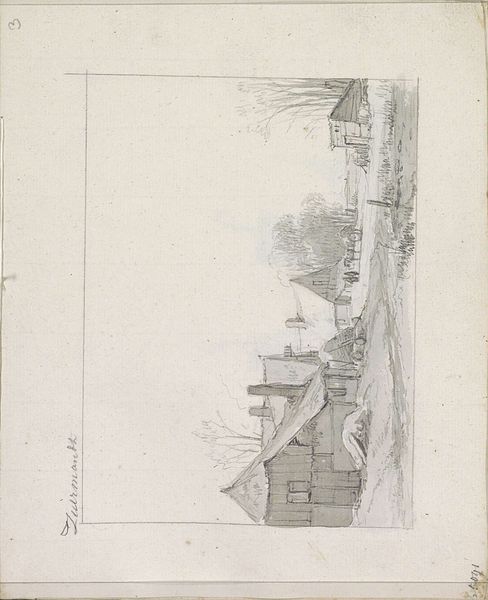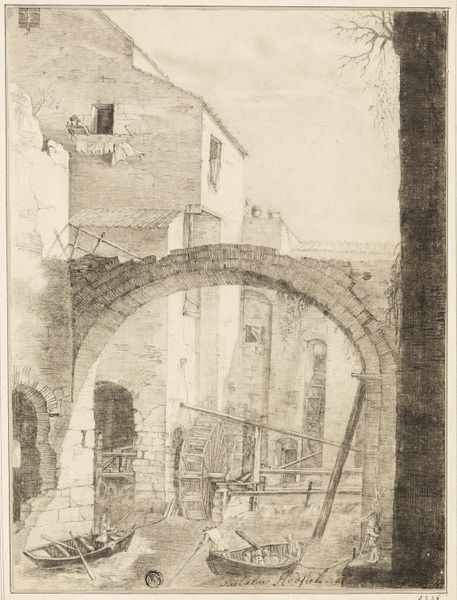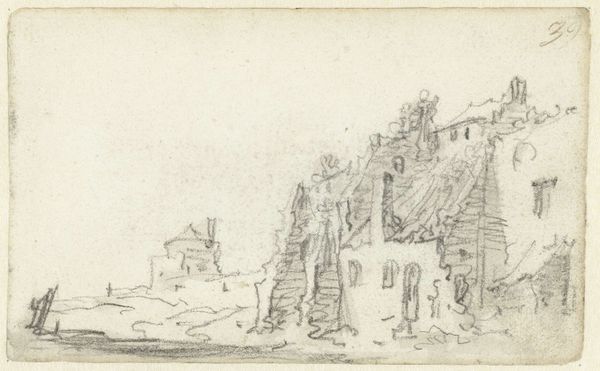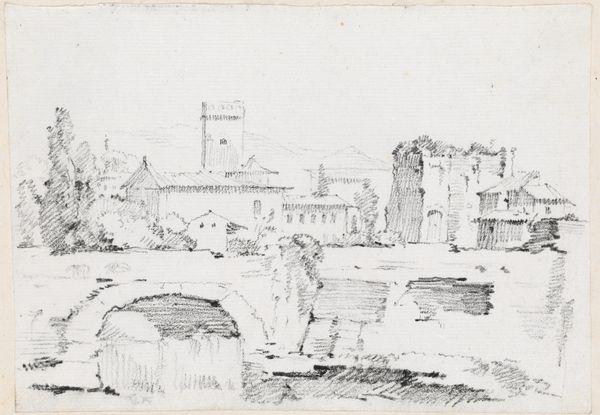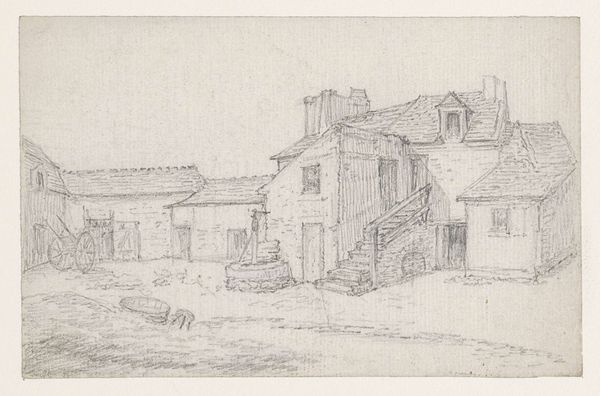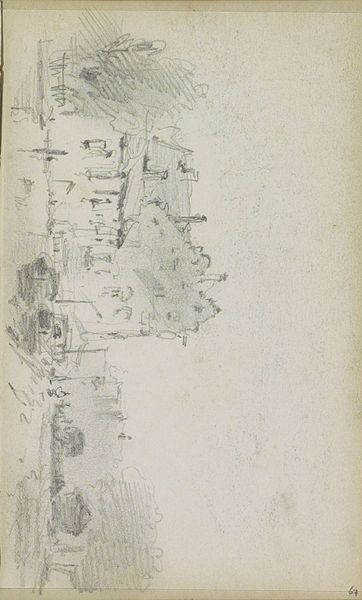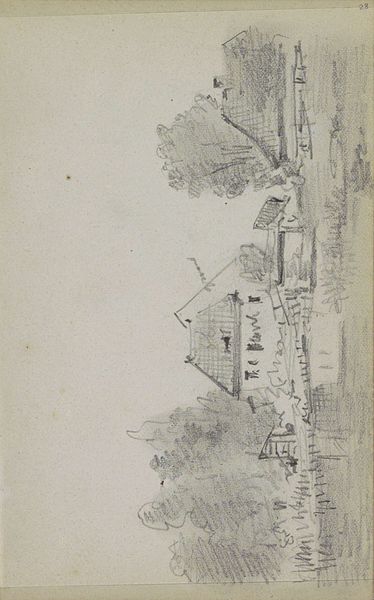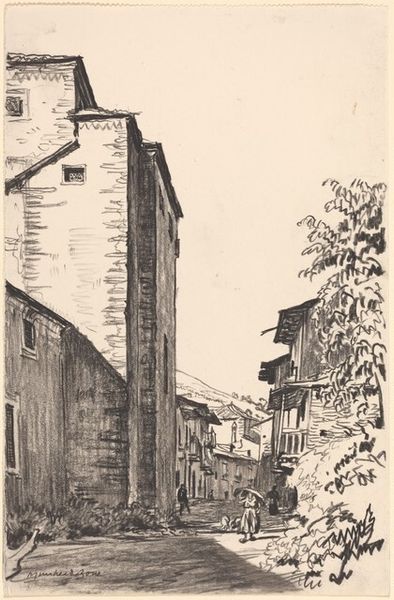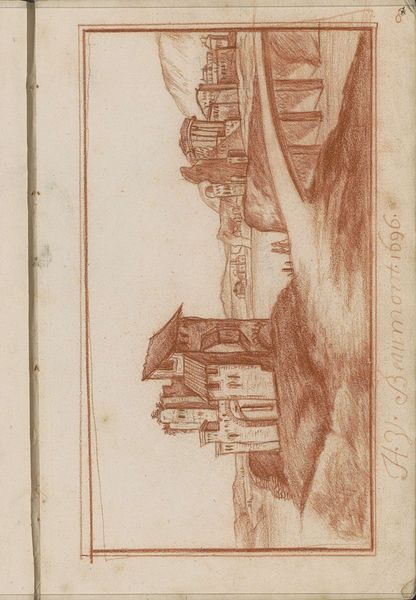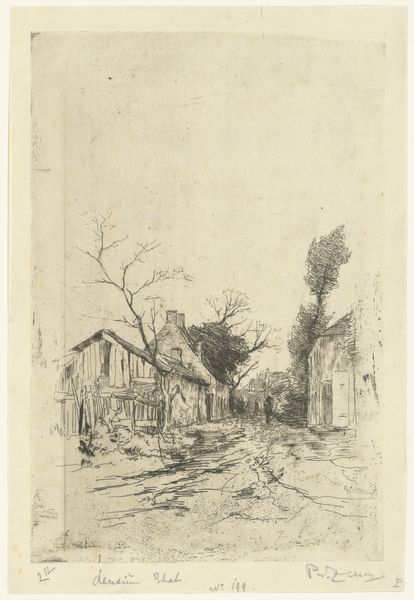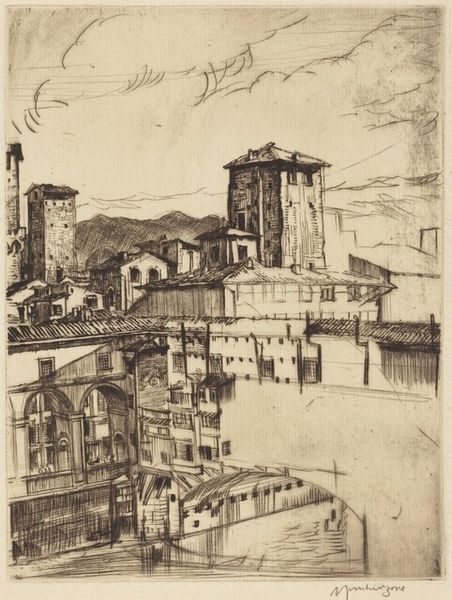
Gezicht op de Via Panisperna naar de Santa Maria Maggiore, Rome 1609
0:00
0:00
etching
#
baroque
#
etching
#
landscape
#
etching
#
geometric
#
line
#
cityscape
#
italian-renaissance
Dimensions: height 274 mm, width 197 mm
Copyright: Rijks Museum: Open Domain
Gerard ter Borch made this ink drawing, titled "View of the Via Panisperna towards Santa Maria Maggiore, Rome," in 1629. What does it mean to produce a drawing of a Roman street in the 17th century? Ter Borch's sketch is more than just a record of a place; it’s a statement about the artist’s position in a rapidly changing art world. In the Dutch Golden Age, artists like Ter Borch ventured to Italy, drawn by the allure of classical antiquity and the Renaissance. The Via Panisperna, with its mix of ancient and contemporary structures, was a stage where history and modernity met. Consider the figures populating the street, rendered with the same care as the buildings. These are not generic inhabitants but individuals contributing to the street's narrative. Ter Borch's choice of subject reflects a growing interest in genre scenes, where everyday life becomes worthy of artistic attention. To truly understand this drawing, we need to delve into the visual culture of the time, examining the prints, drawings, and paintings that circulated among artists and patrons. Only then can we appreciate how Ter Borch’s image participates in and reshapes the visual landscape of 17th-century Europe.
Comments
No comments
Be the first to comment and join the conversation on the ultimate creative platform.
